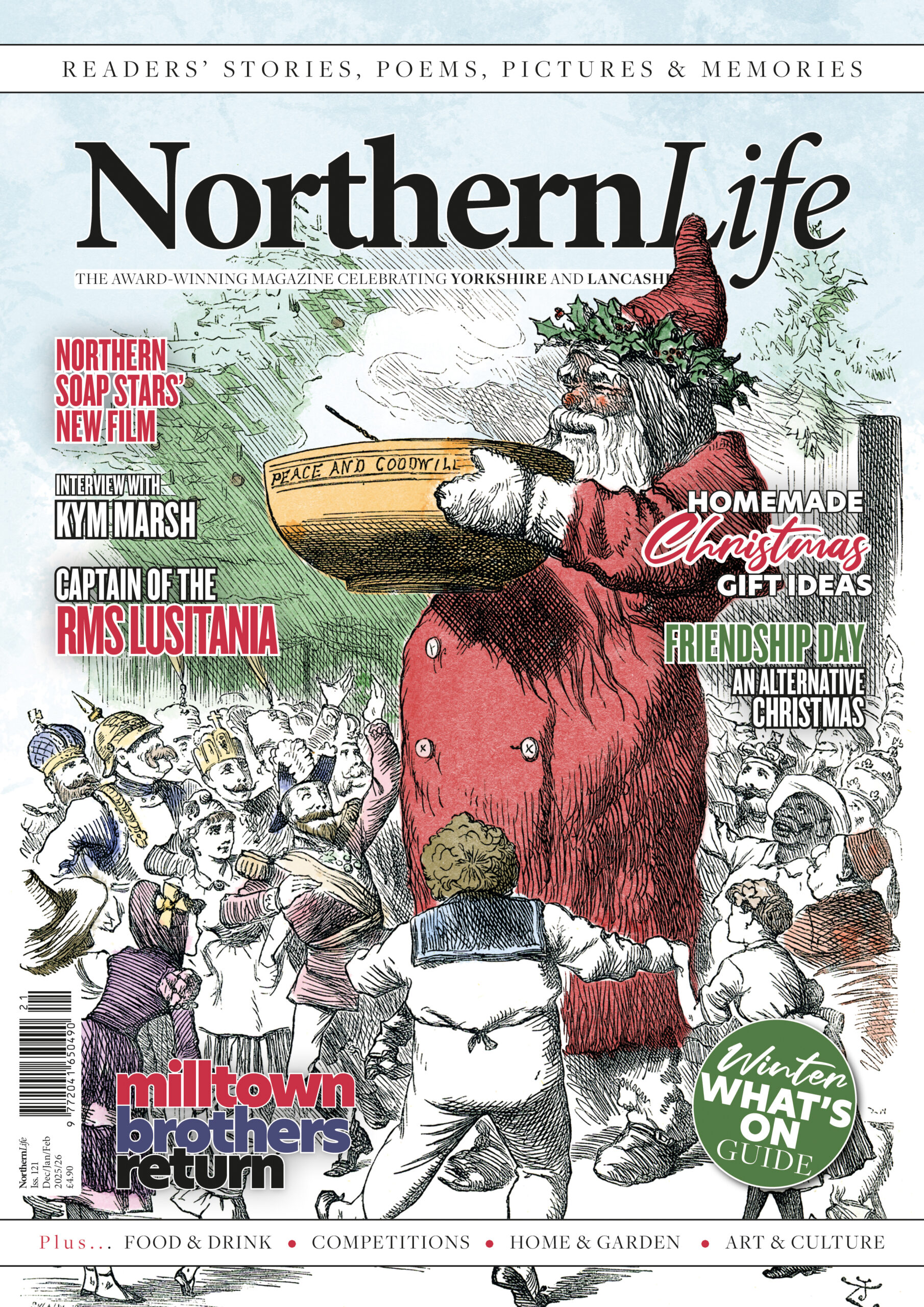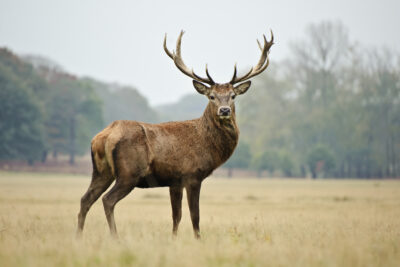
Six of the Best – A Six-Mile Walk Round Hebden Bridge
by Laura Storey
I’M GOING TO SEE THE BEST HEBDEN BRIDGE HAS TO OFFER, ALL WITHIN SIX MILES WITH A HOPE TO BE BACK IN TIME FOR LUNCH.
Hebden Bridge is famously bright, its streets are a mish-mash of rainbow flags, fabulously vivid shop fronts, and, surprisingly for the north and for a town in the bottom of a steep valley, it’s very often sunny. Today however, it’s drizzling and most of the people I walk past in the town centre have their heads down, hurrying to get inside. I, however, am heading out, donning my most fashionable anorak, I’m going to see the best Hebden Bridge has to offer, all within six miles with a hope to be back in time for lunch.

Laura ready for her trek…
I pass the unusual Millennium Clock opposite the Town Hall which, with spiralling planets around a central clock face, looks like something from Harry Potter. Then I head towards Lee Wood over the picturesque Packhorse Bridge. The path through Lee Wood has plenty of places to stop and paddle on a summer’s day, but today my feet are already wet enough through my boots for a paddle to seem necessarily, so I head on, not lingering at the allotments where a sign hangs, warning that trespassers will be composted.
I came here because of a local rumour, or, more accurately, a legend, of outlaw Tom Bell and his cave filled with his ill-gotten gains.
Eventually I come to a fork in the road where I must turn right, up a steep path that is paved with old bricks. The path is surrounded by warning signs to ignore your sat nav and not to continue up the ever-narrowing path. It’s hard to imagine assuming a car would fit, and even harder to work out how the car would arrive at this place without considerable difficulty to begin with, but the abundance of signs seems to suggest that at least a few people have tried and failed to drive up it.
As the path evens out, the forest falls away, and I get a spectacular view of fields containing chickens and a horse, and Spring Wood beyond where the Wadsworth Monument pokes out through the tree tops. The monument on Smeakin Hill commemorates locals that were killed in the world wars.
Heading on, a muddy climb up steep steps leads me further out of the valley until I reach the road to Hebden Hey Scout Centre. The road is my friend for the next mile, but the abundance of bilberries and the glimpses of the valley through the pine trees more than makes up for the tarmac.
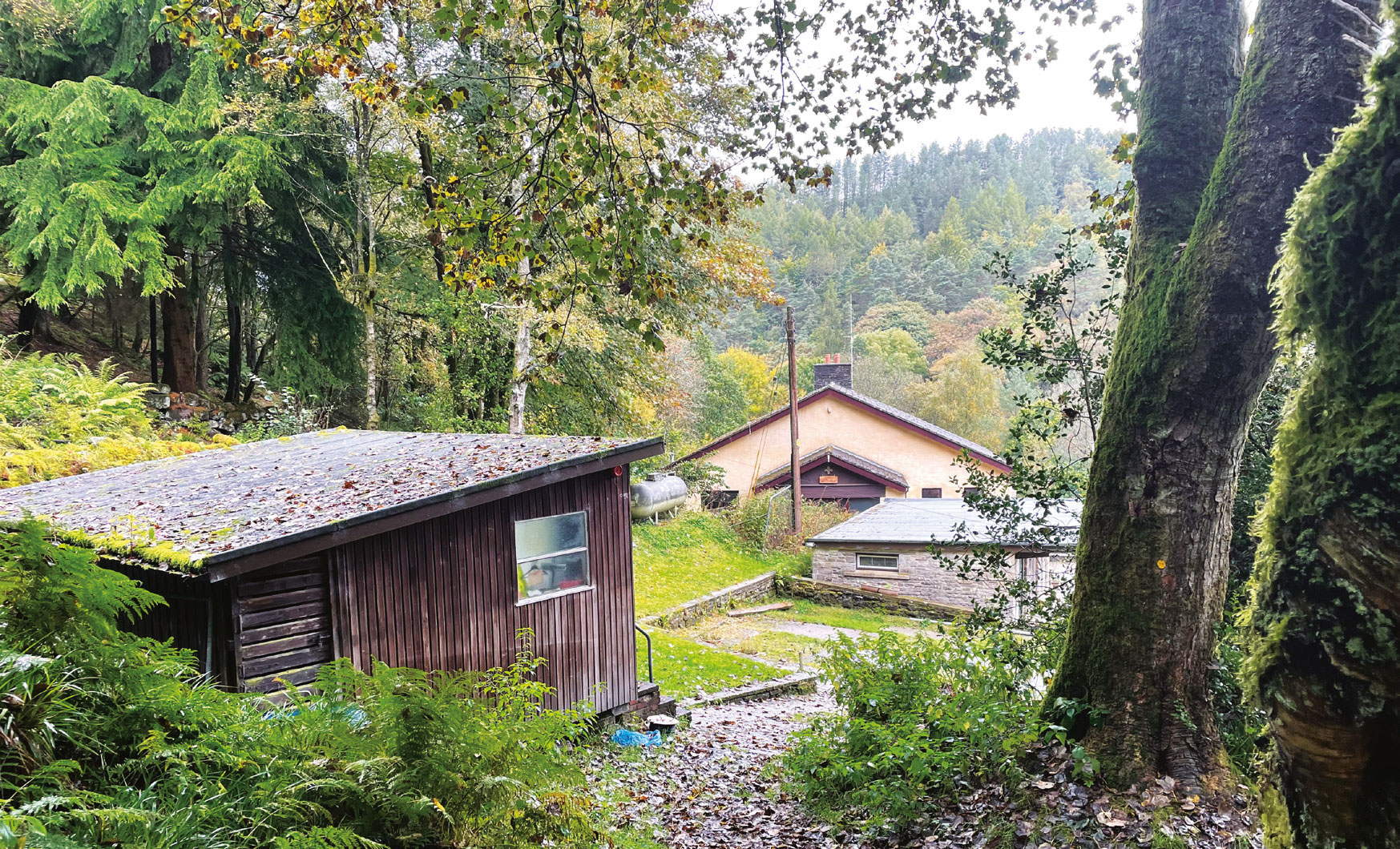
It’s my first time visiting the Scout Centre and I came here because of a local rumour, or, more accurately, a legend, of outlaw Tom Bell and his cave filled with his ill-gotten gains.
Paul Weatherhead in Weird Calderdale suggests the legend originates from a William Broadbent poem which describes Tom Bell as ‘a skulking villain’ who spent his days in ‘his cavern.’ The legend suggests there are entrances across the hillside at Mytholm so that Tom could raid the farms and homesteads by night and make a quick getaway. He is said to have died feasting on the stolen food, either by exploding or falling asleep on the fire.
At the Scout Centre, a stone carving of Tom Bell’s head looks out at his cave, so, with this approximate position in mind, I headed into the woods in search of the outlaw’s bounty. Unfortunately, this search turned out harder than I thought it would be. Although the location of the cave is marked on old maps, this entrance has never been found and it is assumed this entrance was walled up after someone got lost in the cave. Other people have found what they assumed to be another entrance but whether this is the same cave the legend tells of is up for debate.
After 20 minutes or so wandering around the woodland surrounding the Scout Centre, and with the increasing feeling that a scout group may be watching and laughing at my fruitless searching, I gave up, acknowledging that as the drizzle turned into a full-on downpour that the only way I was likely to find the cave was by falling straight into it.
My next stop was Heptonstall, but how to get up there was a bit of puzzle. From the Scout Centre I was able to follow a way-marked path but that quickly turned into an unmarked ditch and a scramble up a hill until a tree blocked my path. I clambered over the tree, splashing into what looked like a river as the rain thundered down the hill. Slipping and sliding up the hillside, I realised I was in fact on the path after all, with a sign pointing up past a broken pipe and the water that spilled out of it and, with my confidence boosted I came across a group of rocks with a hole that had been bricked up. Had I discovered the lost entrance of Tom Bell’s cave? Almost certainly not! But I allowed my imagination to run wild as I turned left and headed up and away from the woods into the lovely hill top village of Slack. Seeking shelter from the rain I ducked into the disused bus shelter and was treated to an image and song from Calder Folk, an illustration installation project inspired by the folklore and legends of the Upper Calder Valley.
Her gravestone had been defaced, with the name of her husband Ted Hughes, scraped off, presumably in response to his alleged ill treatment of the poet.
As it brightened up, I headed into the historic village of Heptonstall, a settlement which dates from the Middle Ages. With its cobbled streets and stone-built cottages you almost feel as though you’ve leapt back in time. I headed to the churchyard which is most unusual as it is one of the few in England with two churches.
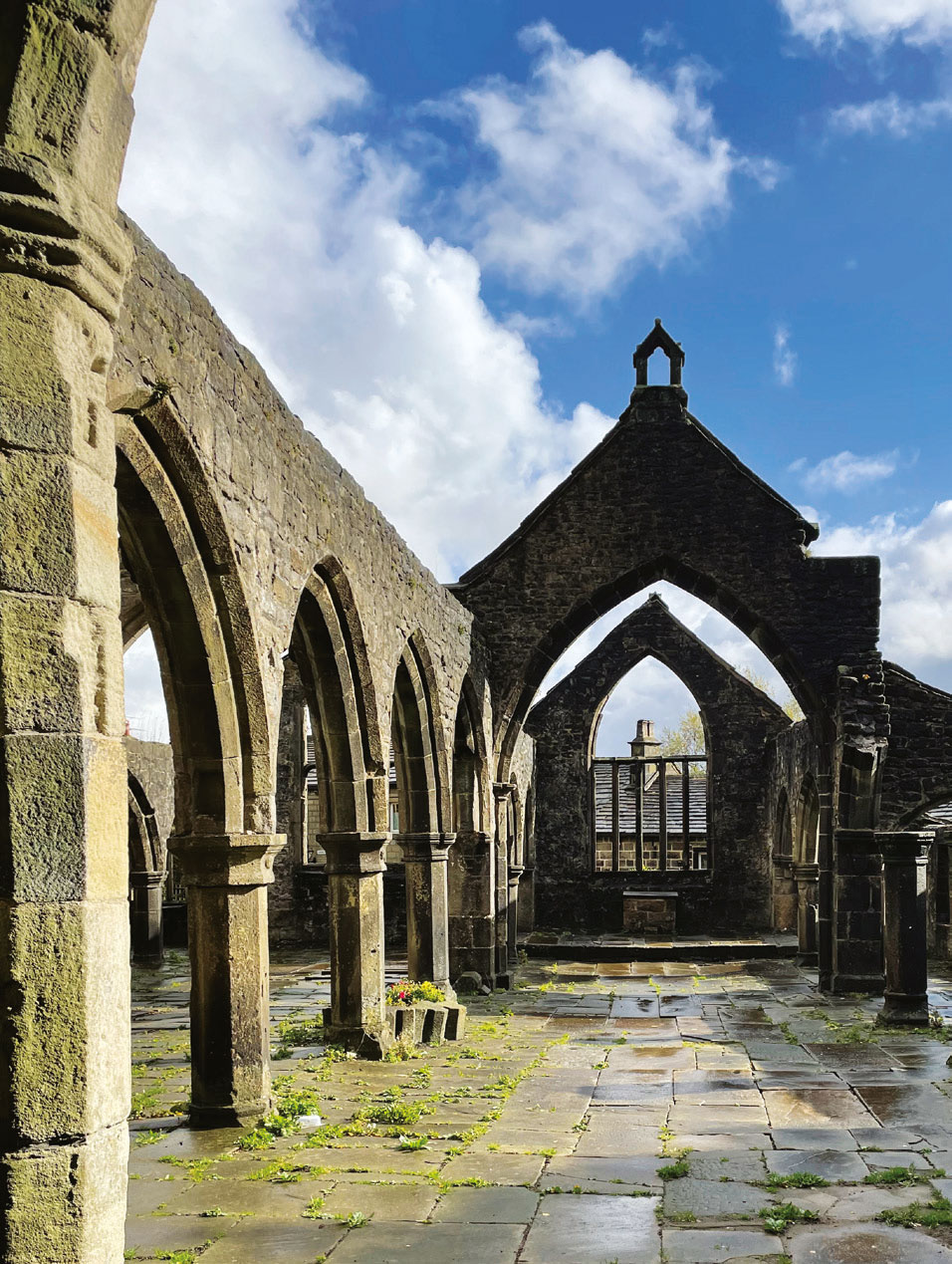
St Thomas a’ Becket Church
The original, St Thomas a’ Becket is over 700 years old and remained in use until the 19th century. The graveyard holds a number of noteworthy gravestones, including that of the leader of the Cragg Vale coiners, David Hartley. Hartley was caught and hanged for his counterfeiting in 1770. Pennies have been tossed on his grave as a nod to his clipping that was so successful that he almost destabilised the currency. A walk around the new church reveals a pinnacle that was struck down by lightening in 1875 and in the cemetery across the lane is the gravestone of celebrated 20th century poet Sylvia Plath. Her gravestone had been defaced, with the name of her husband Ted Hughes, scraped off, presumably in response to his alleged ill treatment of the poet.
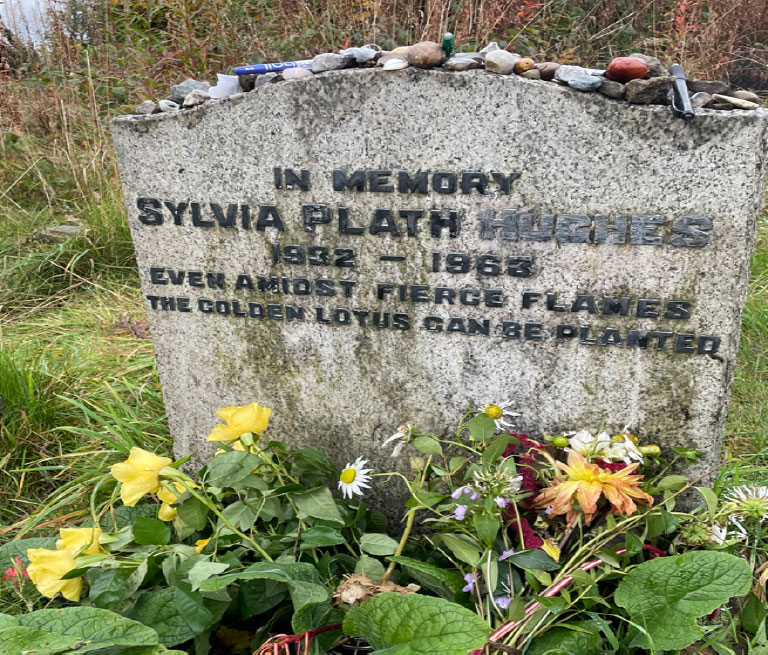
At this point I took a detour to the Towngate car park, you may very well be asking why, as it doesn’t seem a very interesting location, however I heard that in the corner of this car park is the old Heptonstall dungeon and the village stocks where the villages criminals would be brought to serve their punishment.

Heptonstall stocks
After this detour it was time to head home, but I was bamboozled by the amount of walking signs at the crossroads, I choose the path towards Colden which opens up to spectacular views across the valley, you can see all the way to Stoodley Pike Monument which was built in 1814 to commemorate the Battle of Waterloo. The original pike then fell the day the Russian Ambassador left London before the declaration of war with Russia in 1854, it was rebuilt in 1856 when peace was restored. The large peace symbol which has been graffitied onto the stone seems to epitomise the well-known monument that watches over the valley.

A brew and a reyt good read
After taking a moment to absorb the view I head down to Hell Hole, an old quarry which is often used by rock climbers, legend has it, there is an entrance to Tom Bell’s cave hidden somewhere here too. It’s a place as good as any to take a break, have a brew and take a moment to have a read of my favourite mag. Next, it’s down the Cuckoo Mill steps and back into Hebden Bridge, just in time for lunch.
NorthernLife Jan/Feb 2023
